The Art of Minimalist Living in Interior Design and Décor

In the enchanting world of minimalist living, less isn’t just more, it’s everything. It’s a world where simplicity reigns supreme and every design choice speaks volumes in its quiet elegance. Imagine your space as a serene sanctuary, where clutter and chaos have been banished to the land of lost socks and mismatched Tupperware lids. It's like Marie Kondo waved her magic wand and said, "Sparks of joy for everyone!"
What’s the big deal about minimalism, you ask? Well, it's simple (pun intended). By simplifying our surroundings, we're freeing ourselves from the shackles of clutter and opening the door to a world of clear thinking, reduced stress, and boundless freedom.
The impact of minimalism in home design
Minimalism might sound like the latest fad, but it's been around since before avocado toast was a thing. Originating from the groovy vibes of the 1960s minimalist art movement, it's all about getting back to basics and kicking excess to the curb. In the context of home design, minimalism translates to spaces that are free of clutter, where every object serves a purpose or brings joy.

The impact of minimalist design on mental health is significant and well-documented. Studies have shown that living in cluttered environments can make our stress levels skyrocket faster than a squirrel in a caffeine factory. But swap that chaos for calm, and suddenly you're feeling as serene as a sloth on a Sunday afternoon. Minimalist spaces promote tranquility and focus, giving your brain the breathing room it craves.
And there's more. Minimalist design isn't just about decluttering your physical space; it's about decluttering your life too. By embracing minimalism, you're not just ditching the excess stuff; you're embracing a lifestyle of intentionality and sustainability. Each carefully chosen item reflects your values and priorities, turning your home into a sanctuary of mindful living.

Adopting minimalist living in interior design and décor
Transitioning to minimalist interior design and decor can be a rewarding process that not only transforms your space but also promotes a more intentional and peaceful lifestyle. Here are some tips to help you embrace minimalist design and decor in your home.
1. Start with decluttering
Before diving headfirst into a minimalist design scheme, it's time to declutter your space. Channel your inner Marie Kondo and ask yourself, "Does it spark joy?" to assess every item. If the answer's a hesitant "maybe," it's time to bid farewell. Be ruthless in your evaluation. Donate, sell, or trash anything that doesn't make your heart sing. Clearing out the excess not only frees up space but also sets the stage for that serene environment you’re looking to create.
2. Prioritize spatial awareness and flow
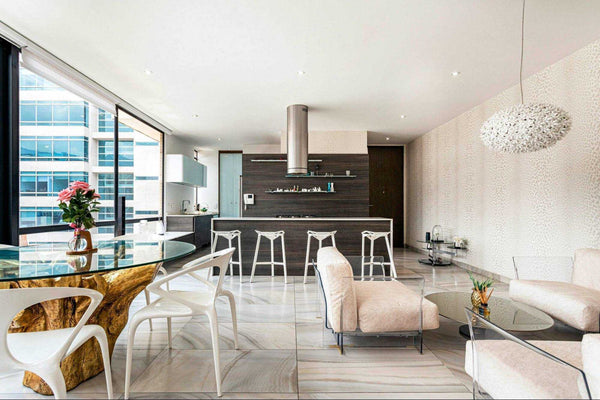
Now that the clutter's out, let's get into the groove of spatial awareness and flow. Minimalism is all about creating open, uncluttered spaces that flow like a smooth jazz melody. Think about the natural pathways and movement patterns in each room and arrange furniture and decor to facilitate easy navigation. Leave room to breathe; you want to leave ample space between objects and avoid overcrowding. Keep the views and sightlines unobstructed for that sense of freedom and expansiveness.
3. Create a functional layout
Who says you can't have brains and beauty? Minimalism is all about marrying style with substance, making your space as functional as it is fabulous. When mapping out your design, think about how you live your life and tailor your layout accordingly. Choose furniture that's as versatile as a shape-shifting superhero. Need a side table? Boom! It's also a storage ottoman with additional seating powers. Keep your paths clear like a zen garden and make sure your essentials are as reachable as your favorite snack during a Netflix binge. Efficiency never looked so chic!
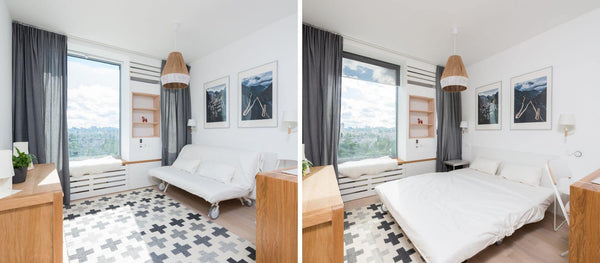
4. Emphasize simplicity and multi-functionality:
In the land of minimalist magic, simplicity steals the show and multi-functionality is the name of the game. Pare down your décor like you're editing your Instagram feed—only the best make the cut. Opt for furniture with streamlined silhouettes and clean lines that scream sophistication. Say no to unnecessary frills and yes to carefully curated items that speak to your heart while pulling double duty. Keep it simple, keep it stylish, keep it fabulous.
5. Embrace neutral palettes:
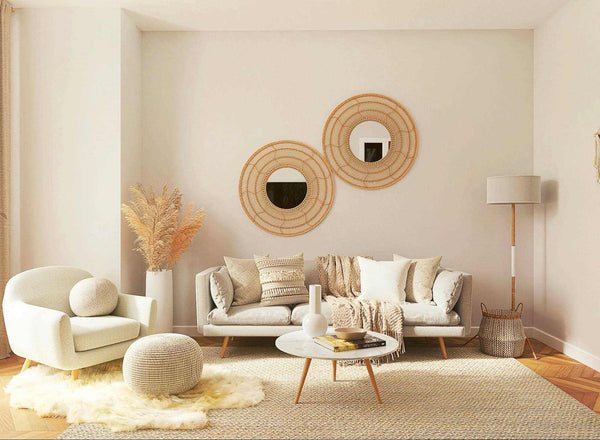
Neutral color palettes are a cornerstone of minimalist interior design. Embrace the calming hues of white, beige, and gray for it’s these soft, understated shades that create a canvas as pure as fresh snow, allowing your space to breathe while basking in a sense of harmony. Mix and match textures within the neutral spectrum to add depth and intrigue without overwhelming your senses. And hey, no harm in sprinkling in a dash of color here and there to create focal points and inject personality into your space. It's like adding a cherry on top of an already delicious sundae—just enough to tantalize the taste buds without stealing the spotlight.
6. Invest in quality over quantity
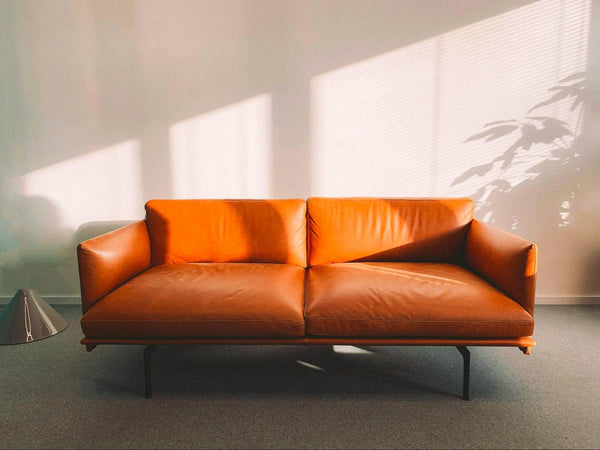
In a minimalist home, every item should be carefully chosen and serve a purpose. When you're shopping for furniture and decor, think long-term relationships, not one-night stands. Invest in pieces that are sturdy and built to last. Sure, they might cost a pretty penny upfront, but trust us, they'll pay for themselves in the long run when you won’t need that frequent replacement. Look for timeless designs that transcend trends and seamlessly integrate into your home's aesthetic. Think of it like splurging on good wine, instead of the cheap stuff.
7. Use room dividers wisely
The now-trending open-plan concept is great in keeping with the minimalist theme since it’s all about maintaining that sense of unity and flow. But division can become necessary to give that flow some direction and to keep things organized. Room dividers are invaluable tools for creating those separate zones while keeping the openness intact. Opt for light room dividers like this Affluent Flow Room Divider or this Polycarbonate 360 Folding Portable Partition that delineate your spaces while letting light and air pass through.
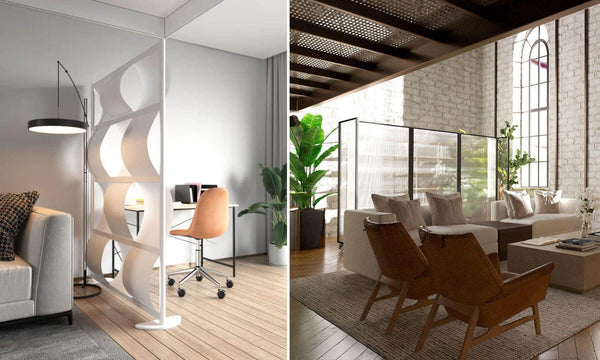
What’s more? These studio dividers are not just pretty faces, they’re shape-shifting DIY marvels. Assemble the modular pieces together when you want to delineate your living room or bedroom to create a home office, or home gym within seconds. And when you want that openness without barriers, just disassemble the divider and stow it away for another time.
8. Maximize natural light:
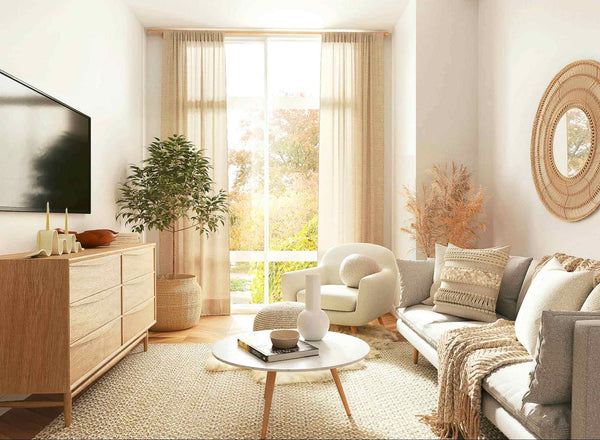
Natural light is like the holy grail of minimalist design. Like a magic wand, it instantly makes your space feel bigger, brighter and airier. So make the most of it! Maximize natural light by keeping windows uncovered or opting for sheer, lightweight curtains that allow sunlight to filter through. Arrange your furniture strategically to soak up every ray, and consider adding a few reflective surfaces like mirrors and glass tabletops to bounce that light around. And here’s another pro tip: place light-colored furnishings and decor near windows so that they reflect and diffuse light, spreading good vibes everywhere and making the most of this radiant energy.
9. Incorporate personality without excess
Let’s debunk a myth here: Minimalism isn't about stripping your space of personality—it's about letting it shine with just the right amount of flair. Choose decor items that hold sentimental value or reflect your interests and passion. But here's the secret sauce: keep it curated. Showcase a few well-chosen pieces of artwork, family photos, or cherished mementos as focal points. By limiting the number of personal items on display, you ensure that each piece steals the spotlight without hogging the stage. Remember, it's not about how much stuff you have but the stories they tell.
10. Opt for hidden storage:

In the sleek and streamlined world, storage solutions need to be as practical as they are discreet. Say goodbye to visual clutter and hello to furniture with hidden compartments. Think ottomans with secret stashes or bed frames with drawers, or coffee tables with lift-up tops. And don't forget about vertical space. Hang some shelves or mount some cabinets to keep your surfaces clear and your stuff out of sight. Oh, and here's a nifty trick: stylish storage bins or baskets. They'll keep your clutter in check while adding a touch of chic to your space.
11. Emphasize texture and material:
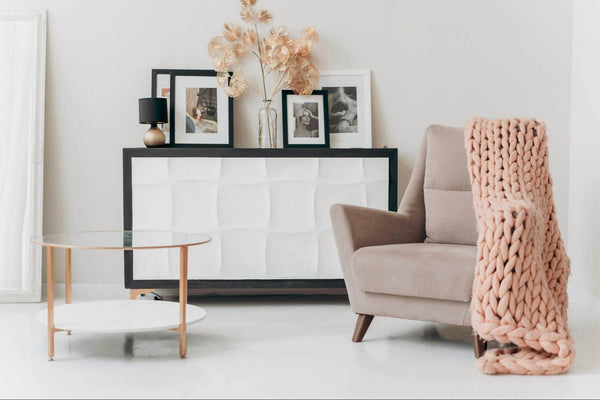
Texture is the secret ingredient that takes your minimalist masterpiece from 'meh' to 'wow' in a heartbeat. Mix things up with a variety of materials, from smooth surfaces to rough textures and everything in between. Think wood, stone, or leather to add warmth and character to your space. Layering textures adds that richness and complexity to the minimalist space, creating an inviting atmosphere without taking away from the clean, modern aesthetic.
12. Add flexibility and adaptability:
Minimal doesn’t have to mean static. As life and its needs change, our spaces should also adapt to them, continuing to be functional and a source of joy. Incorporate furniture and decor that can easily adapt to changing needs and preferences. Opt for modular pieces that can be rearranged or multifunctional items that serve different purposes. Embrace lightweight and portable furniture for easy maneuverability, and choose storage solutions that can be adjusted to accommodate varying storage needs.
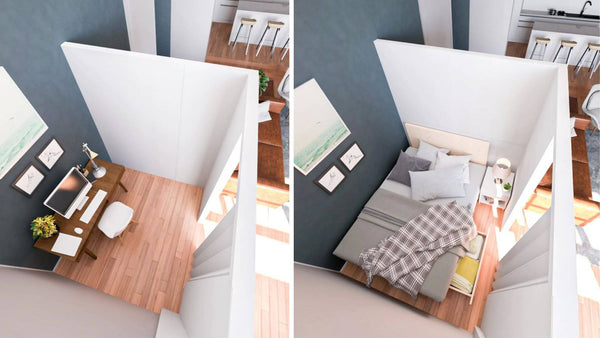
One great way to add flexibility to a minimalist home is by using temporary walls to create multifunctional spaces. Imagine a living room corner that transforms into a productive home-office or a study zone during the busy times, and into a guest bedroom during the holidays. With a temporary wall like this L-Shaped Partition Wall with Door, that’s totally doable, that too with basic tools and in an hour of DIY fun. Not only does it come with a modern, minimal, and sleek aesthetic, but it’s also 100% adaptive and functional, keeping up with the minimalistic theme.
13. Adopt a mindful shopping habit:
Last, but certainly not least, let’s talk shopping strategy! Before you hit that 'add to cart' button, ask yourself: Does this piece align with my values? Does it serve a practical purpose? Will it stand the test of time? And most importantly, does it fit the vibe of my space? Avoid impulse buys like the plague. Think of your purchases as VIP guests at the party, not just random strangers crashing the scene. It’s all about quality over quantity. Opt for pieces that are as timeless as a classic movie, and you'll never go out of style. And don’t forget about sustainability when you shop. It's good for your space and even better for the planet.
Embracing minimalism as a way of life

In the ever-evolving landscape of interior design, minimalism stands out as a timeless and transformative approach—a philosophy that transcends trends and fosters a deeper connection between our physical surroundings and our inner selves. As we embrace minimalist living, we're not simply rearranging furniture or decluttering closets; we're reimagining the way we inhabit our spaces and engage with the world around us. With each mindful choice and intentional design, we're creating environments that nurture our souls, inspire our creativity, and elevate our everyday experiences. So, let's celebrate minimalism as a journey of self-discovery, self-expression, and self-care—a journey that leads us not only to beautifully curated spaces but also to a more fulfilling and meaningful life.

